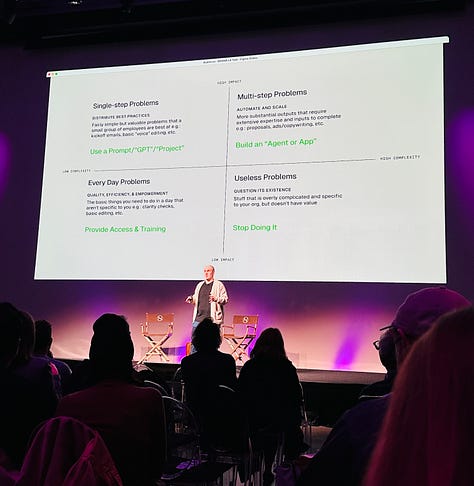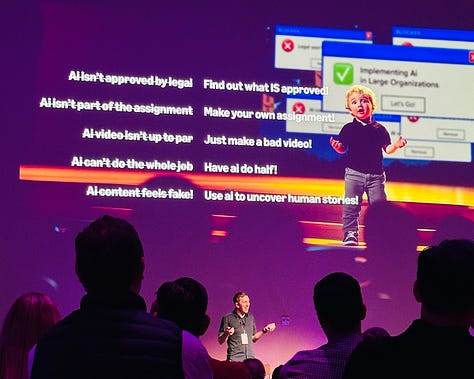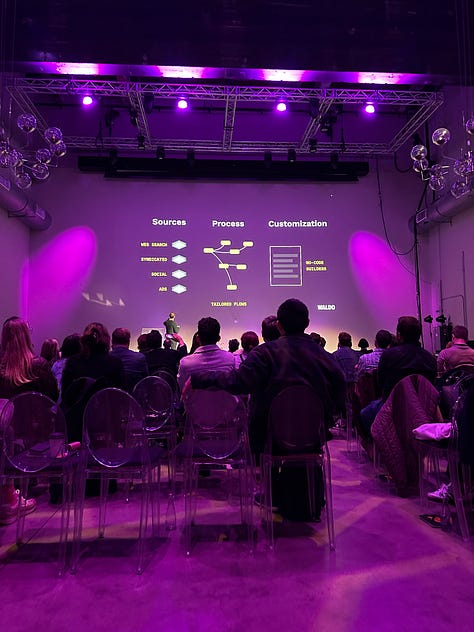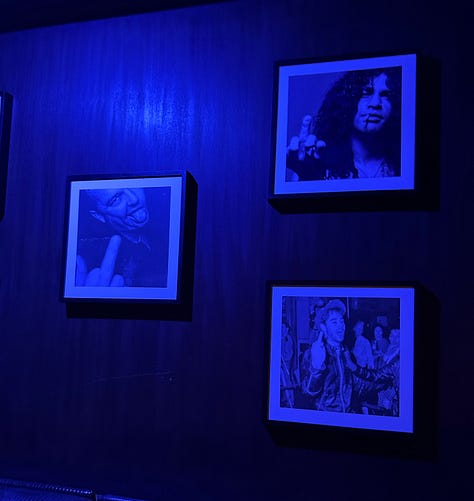Finding Intelligence in Hollywood
Silver linings and reasons for AI optimism at BRXND LA
I’m writing this en route to LAX on my way back to Austin, having spent a whirlwind 2½ days out in Hollywood and adjacent neighborhoods visiting the We Are Social offices, taking meetings, and attending the BRXND AI conference on Thursday.






As I mentioned last week, I came into the event in need of a reset around AI1, my brain starting the year toggling between cynicism about real near-term impact and dread over the negative second-order consequences waiting down the line. Either this trip would help reframe my thinking to be more sustainably positive or I’d just confirm my worst fears about the career destruction ahead, go home and start preparing for my next career as a woodworker.
You do not have to worry about my newsletter-typing digits falling prey to a band saw, at least for the foreseeable future. In fact, the vibes and conversations (and even many attendees) took me back to the mid-2000s, when everyone was experimenting and we weren’t all suffocating under a weighted blanket of best practices.
I had three takeaways from the day (and happy hour the night before), which have me more excited professionally for the rest of 2025 than I have been in some time:
AI can raise the ceiling and the floor
It’s not just that AI opens up new creative possibilities, it’s that it can also provide the types of tools that ensure that whatever expectations of speed and scale are put on a creative team, they can rise to the occasion.
Mike Houston from Amazon showed off an example of a tool his team built for in-house use, to help copywriters identify language options in context (what a thesaurus should be but never quite delivers on). The output was over 400 variations across hundreds of different consumer touchpoints. Not the sort of robotic offer messaging you’ve seen in other tailored creative examples in the past; this was exceptional copywriting and language choices, uncompromising creativity at scale.
AI can kick the doors open
Blogs in the mid-2000s meant that people like me2 could suddenly publish their own regularly-updated websites. Cloud-based software expanded that promise, allowing just about anyone to build digital infrastructure on which they could run their business. Both phases allowed for a lot more bootstrapping, but still required humans to scale the backend production and operations.
AI in the mid-2020s is starting to enable people to build more complex businesses and take them further without needing the kind of upfront investment that followed the digital and cloud-based startups of the previous two decades. On the one hand, this will indeed mean some larger companies can pare back. It will also mean that some of those displaced at larger companies will have a broader range of opportunities to build businesses at the intersection of their skills and passions, and won’t need them to scale with tens or hundreds of employees to satisfy investors’ need for perpetual growth.
AI can atone for the sins of SaaS
As someone who has spent twenty years driving organization-wise adoption of SaaS (software-as-a-service) tools inside some of the world’s largest companies, obsessing over cloud-based software solutions to power my side hustles and personal life, and building several platforms of my own, I see game-changing potential in AI as a sort of glue that can help connect and augment systems that have never quite worked like they should.
After a winner-takes-all approach to SaaS became the norm, much of our data is trapped inside solutions that are too expensive to leave, but who have little imperative to innovate having built moats that keep out the emerging barbarians at the gate with their more innovative offerings. AI is already providing tools that unlock the value of our data and investments in those legacy platforms, modernizing businesses without having to revamp a tech stack.
A Note of Thanks
Finally, a huge shout-out to Noah and James, who put on the event (and were gracious enough to invite me). BRXND AI has evolved and grown over the last two years, from an early “if we build it, will they come” experiment into the type of event you prioritize in your annual calendar, as well as a brilliant extension of their new AI-focused consultancy, Alephic.
I’ve been fortunate to know Noah since 2006 (he was one of the first people I met after moving to NYC) and James not long after. They have always had a preternatural ability to bring the best people together and create an environment for interesting thoughts and ideas to percolate3, and this was certainly no exception. Should the opportunity present itself, I highly encourage you to attend any of their upcoming events, whether it’s BRXND, or their other AI and autonomy-focused series, RIDE AI.
Style note: I think I am going with AI over A.I. for now. The world seems to be divided but I prefer common acronyms to just drop the periods and Noah’s use of AI confirmed it for me.
Those with a modicum of tech savvy, but lacking the know-how to fire up a command line and configure a server ourselves.
Yeah, I did it.

